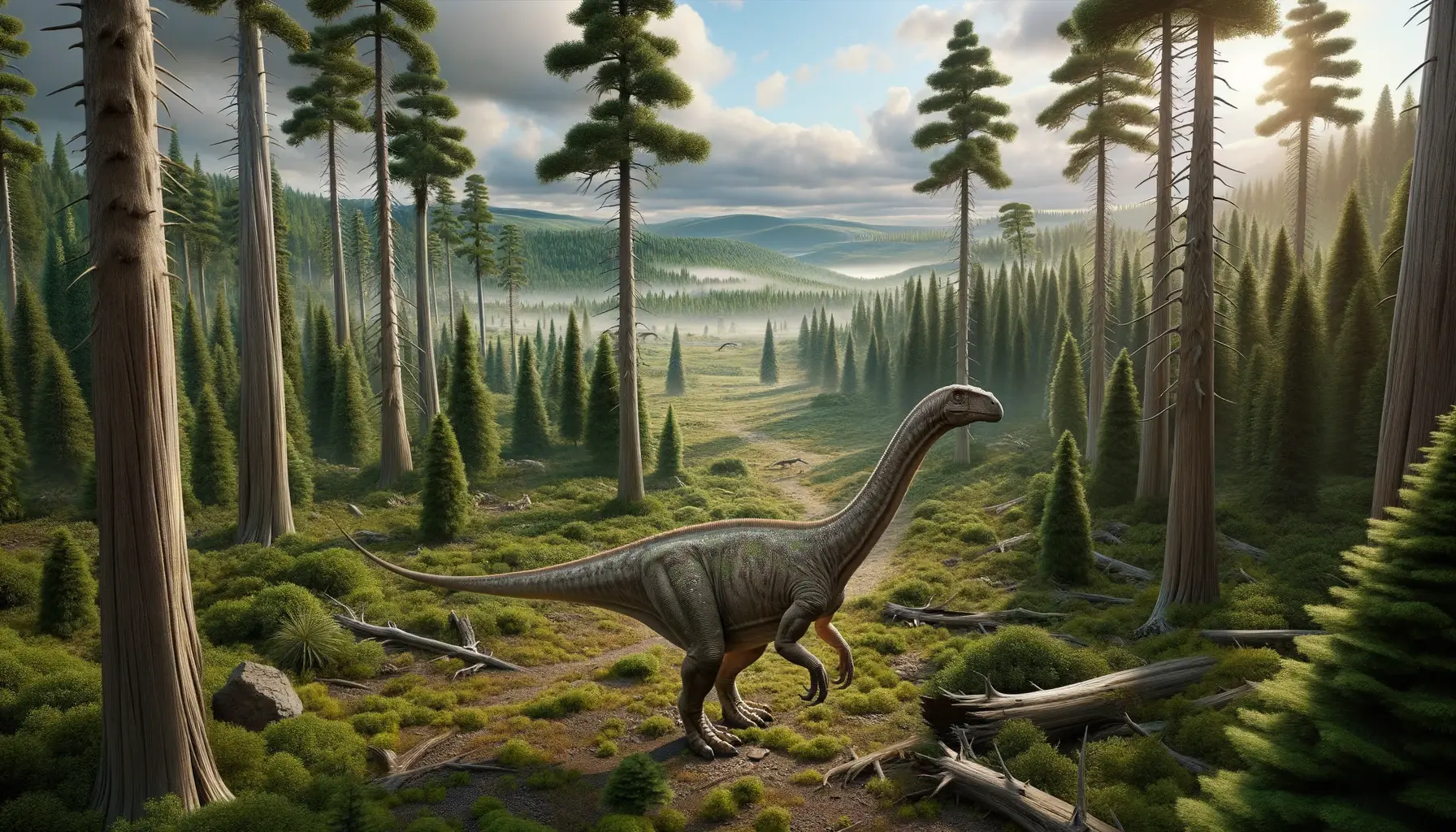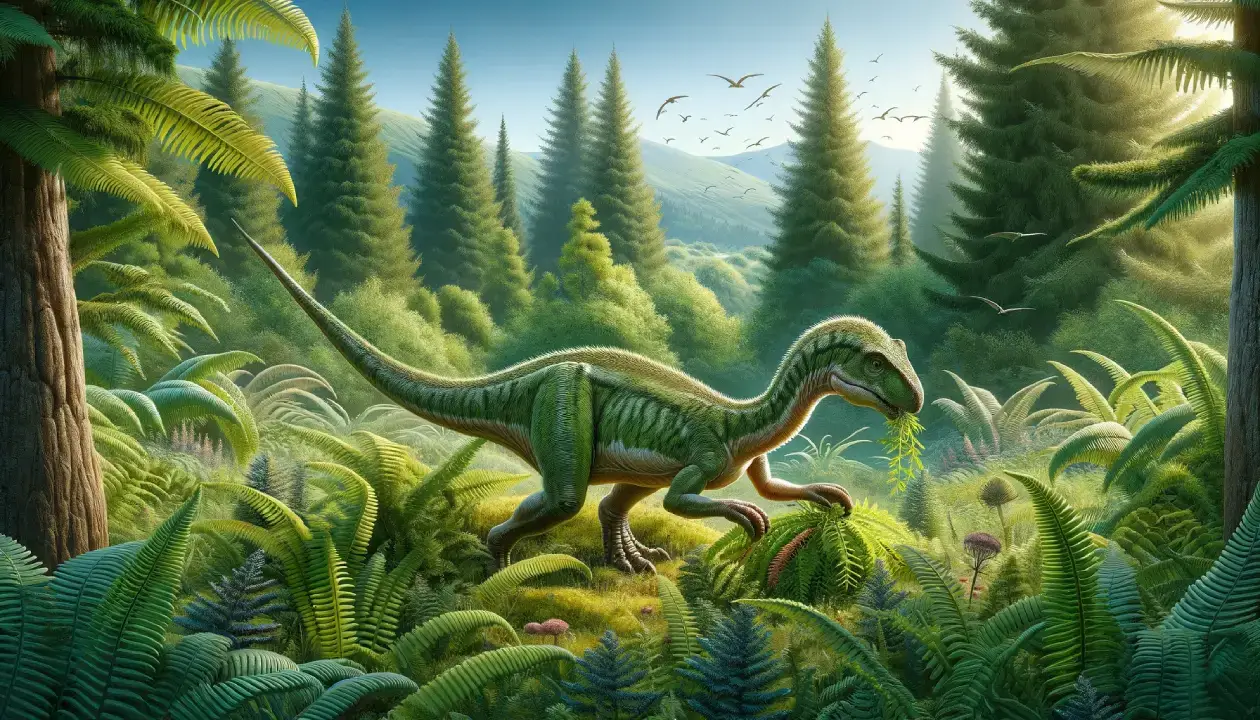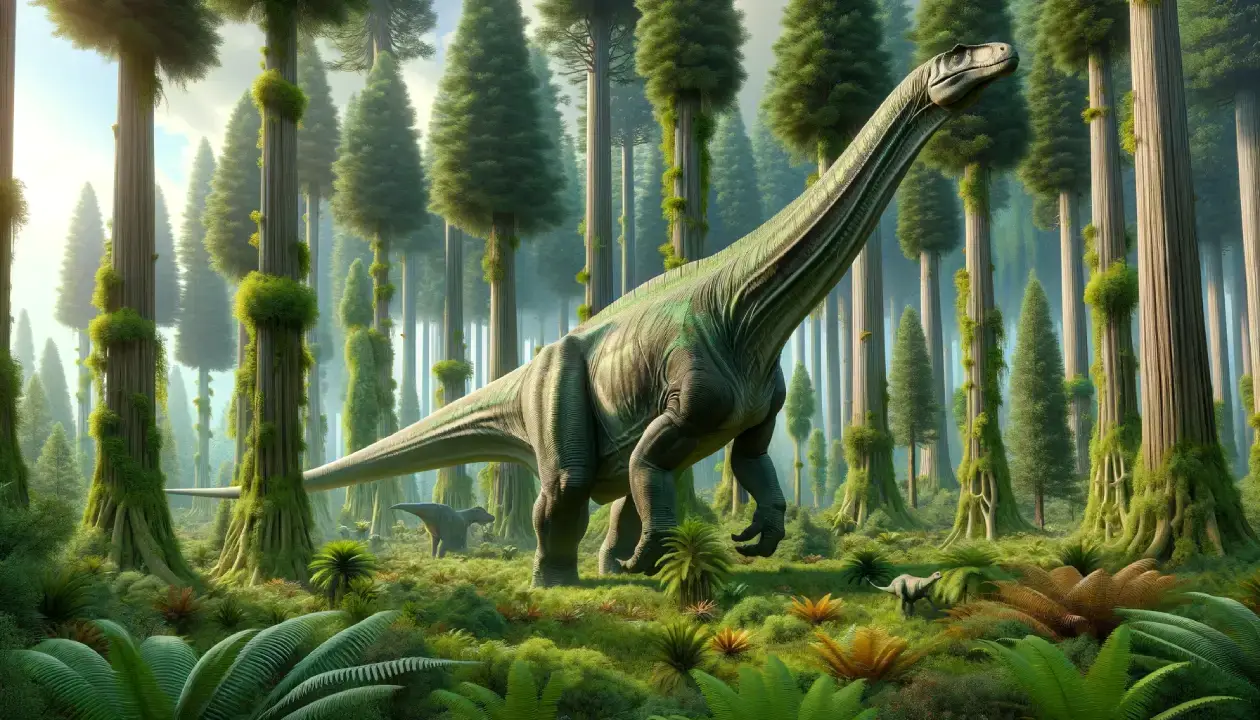Anchisaurus was a primitive sauropod dinosaur that lived in what is now northeastern North America during the Early Jurassic period, about 190 million years ago. It was one of the first dinosaurs to be discovered in the USA, and its name means “near lizard”. It had a long, slim body, a small head, and ridged teeth for shredding leaves. It could walk on two or four legs, and may have been omnivorous.
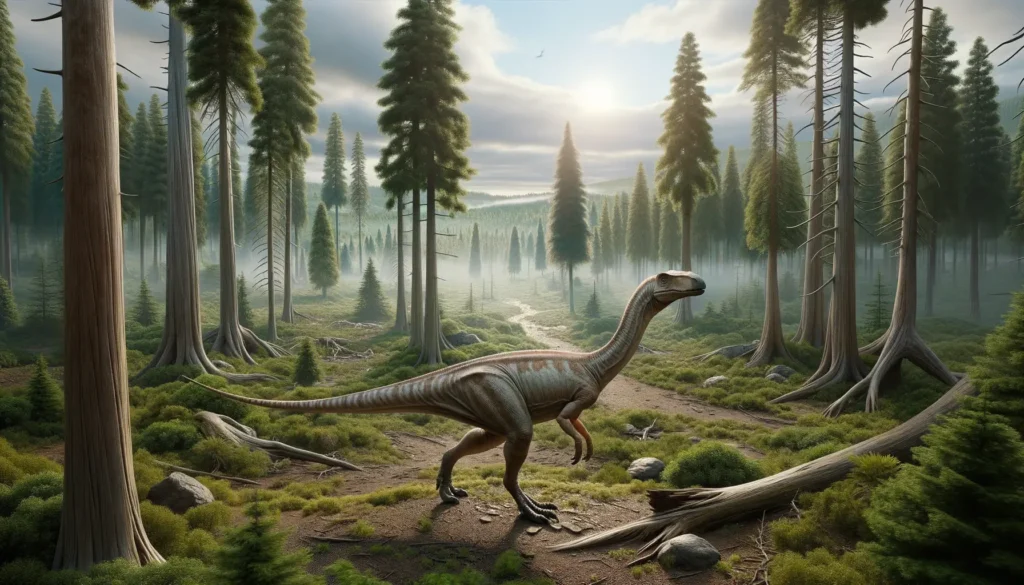
Basic Information
| Feature | Details |
| Time Period | Early Jurassic, 200-195 million years ago |
| Diet | Herbivore |
| Length | 2 m (6.6 ft) |
| Weight | 27 kg (60 lb) |
| Size | Small |
| Posture | Bipedal or Quadrupedal |
| Locations | USA |
| Continent | North America |
| Type | Sauropodomorph |
| Habitats | Grasslands, Floodplains |
Description of Anchisaurus
Historical Context
Anchisaurus was one of the first dinosaurs to be discovered in North America, and the oldest known from that continent. It was named by Barnum Brown in 1914, based on a partial skull found in Massachusetts, USA¹. The name Anchisaurus means “”near lizard””, because it was closely related to the giant plant-eating dinosaurs that came later, such as Brachiosaurus and Apatosaurus. Anchisaurus belonged to a group of dinosaurs called sauropodomorphs, which had long necks and tails. It lived during the Early Jurassic period, about 200 to 195 million years ago, and shared its habitat with other dinosaurs such as Dilophosaurus, Coelophysis, and Kayentavenator.
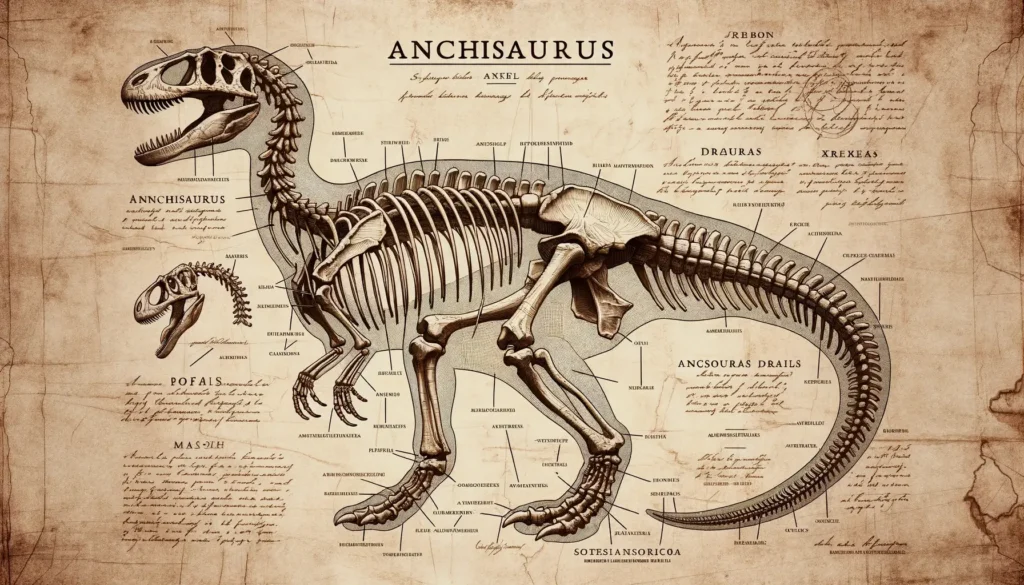
Physical Attributes
Anchisaurus was a small, lightly built, four-legged herbivore that could grow up to 2 meters (6.6 feet) long and 27 kilograms (60 pounds) in weight. Its skull had a large thumb claw that may have been used for defense or grabbing branches. The skull frill was short and rounded, with small openings that made it lighter and may have helped with cooling or breathing. The snout was narrow and pointed, with a sharp beak for cutting plants. The teeth were small and leaf-shaped, arranged in rows that formed a grinding surface for chewing food.
Feeding Habits
Anchisaurus was an herbivore, meaning it ate plants. It used its long neck to reach low-growing plants such as ferns, cycads, and conifers. It may have also used its tail as a balance when standing on its hind legs to reach taller plants. Anchisaurus had a simple digestive system, relying on bacteria to break down plant fibers. It may have swallowed stones (gastroliths) to help grind up the food in its stomach.
Unique Features
Anchisaurus had several features that made it different from other sauropodomorphs. One of them was its thumb claw, which was larger than those of most other plant-eating dinosaurs. This claw may have been used for defense against predators, or for grabbing branches to pull down leaves. Another unique feature of Anchisaurus was its frill ornamentation, which consisted of small bumps along the frill margin. These bumps may have been used for display or recognition.
Movement and Speed
Anchisaurus was a fast-moving dinosaur, due to its small size and light body. It walked on four legs, using a flexible posture with bent limbs and flat feet. It may have been able to run at speeds of up to 30 kilometers per hour (19 miles per hour), but not for long distances or periods. It probably relied on its agility and thumb claw to protect itself from predators, rather than size or strength.
Cultural Impact
Anchisaurus is not a very well-known dinosaur among the general public, as it has not been featured in many popular media or cultural works. However, it is an important dinosaur for paleontologists and scientists, as it provides valuable information about the early evolution and diversity of sauropodomorphs in North America. Anchisaurus is also interesting for being one of the first dinosaurs to be discovered and named in North America.
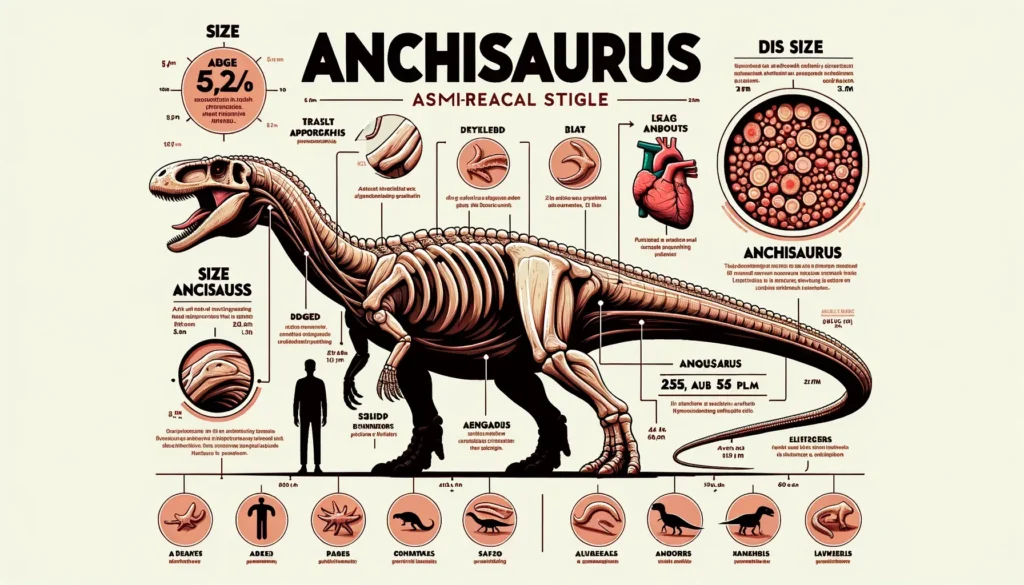
Interesting Facts
- Anchisaurus was named after its close resemblance to the giant plant-eating dinosaurs that came later, but it actually lived about 100 million years earlier than them.
- Anchisaurus is rare compared to other sauropodomorphs in the area, and usually found near marine sediments. This indicates that Anchisaurus may have lived near the coast where other sauropodomorphs did not.
- Anchisaurus may have been related to another early sauropodomorph from Asia: Isanosaurus, which was also one of the oldest known sauropodomorphs.
Related Dinosaurs
- Isanosaurus: A sauropodomorph from Thailand that lived in the Early Jurassic, about 190 million years ago.
- Plateosaurus: A sauropodomorph from Europe that lived in the Late Triassic, about 210 million years ago.
- Apatosaurus: A giant sauropod from North America that lived in the Late Jurassic, about 150 million years ago.

